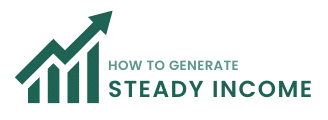Get to know what incremental cashflow is and how it grows profits and what are the best strategies of enhancing cashflow in your business to grow it.
What Is Incremental Cashflow?
Incremental cashflow describes the new cash generated by a new project, product or investment decision. It is the ratio between the amount of money earned and the amount of money that is expended due to that particular business activity. Simply put, it is an indication of the amount of additional cash an organisation will generate upon initiating something new – such as the introduction of a new product, entry into a new market or a new upgrade.
The incremental cashflow formula is given as:
Incremental Cashflow = Cash Inflows of New Project – Cash Outflows of New Project.
It is a formula used by businesses to determine the net gain or loss brought about by their decision.
As an illustration, consider a firm that is introducing a new line of products. The company makes additional profits through sales and incurs increased production, marketing, and distribution costs. After the additional costs have been deducting the new revenue, the difference is the incremental cashflow. A positive incremental cashflow indicates that the project is profitable with a negative one indicating that the project may run at a loss.
Significance of Incremental Cashflow in the Decision Making
Knowing incremental cashflow can make one make smart financial decisions. It enables owners of business and investors to know the likelihood of a project adding value to the company as a whole or decreasing the profitability.
Assesses Project Profitability
Incremental cashflow can be used to evaluate the true value in doing a project by determining the amount of additional profit the project will generate relative to the current activities.
Guides Capital Budgeting
Incremental cashflow is used by managers in comparing investment opportunities in capital budgeting. It aids in determining the projects which bring maximum returns at the least risk.
Avoids Overestimation of Returns
Most companies confusely incorporate total cashflow rather than incremental cashflow during project appraisal. The companies are in a better position to make more realistic and data-driven decisions because they only concentrate on additional inflows and outflows, without inflated profiteering of profits.
Concisely, incremental cashflow is not a figure merely by itself and it is a decision making tool that will determine whether a business project will bring actual financial increase or not.
Incremental Cashflow: How to Calculate
Incremental cashflow is a crucial calculation step to comprehend the level of profit one can make on a new venture or investment. It enables business to make proper decisions prior to resource allocation. The following is a simple step-by-step process of determining it:
Determine Incremental Revenues
The first step includes calculating the additional revenues that the new project will generate. This may be in terms of new product sales, higher charges of their services, or market penetration.
Subtract Incremental Costs
Allow all the extra costs involved in the project – the cost of production, marketing campaign, labor and maintenance. These are the expenses that emerge due to the project only.
Include Modifications in Working Capital, Depreciation and Tax Implications
Modify your cashflow taking into account the modifications in working capital (or inventory or receivables), the experience of depreciation of new assets, and the tax effect of the profits or losses. These aspects provide a realistic view of the net benefit of the project.
Use Tools for Accuracy
Calculation of incremental cashflow is usually done with accuracy using tools such as Microsoft Excel or financial modelling software. They assist companies to formulate sophisticated forecasts, implement discount rates and future projections to determine profitability in the long run.
An analysis of all these elements helps to determine whether the new initiative will cause positive or negative impact on the general financial status of businesses easily.
Elements of Incremental Cashflow
Incremental cashflow can be better explained with reference to the role of or three essential components:
Initial Outlay
This is the original investment that must be made to kick-off the project like buying of equipment, research and development, or marketing establishment expenses. It is a single cash expense that is incurred during the start of the project.
Operating Cashflows
These are the continuous inflows and outflows that take place in the life of the project. They encompass the sales revenues, recurring costs such as labor and materials and maintenance costs. This element shows the actual earning potential of the project.
Terminal Value
Assets or equipment that remain at the project end may have the residual value called salvage value. The terminal cashflow refers to any remaining value of asset or working capital recovery.
These elements combined are the basis of incremental cashflow analysis – enabling the businesses to predict, analyze and make sure investments.
Faulty Accounting Resourcing in Incremental Cashflow Measurement
Although incremental cashflow is one of the best financial analysis tools, most businesses commit numerous errors that give inaccurate findings and poor investment choices. It is possible to avoid these pitfalls and make sure that your projections are a reflection of reality, which is understanding of these pitfalls.
The following are the most common pitfalls that companies commit in the calculation of incremental cashflow:
Ignoring Opportunity Costs
The most common mistake is that opportunity costs should not be overlooked the benefits that a business may miss when pursuing one project instead of the other. An example is where a firm may lose an opportunity to manufacture a new product and use the same space to manufacture a more lucrative product in the event that it uses a factory to produce the new product. Such missed opportunities must always be taken into consideration in the evaluation of incremental cashflow.
Among the Costs that should not be included is Sunk Costs
Sunk costs are the past costs that cannot be recuperated like the research cost or a marketing study prior to the approval of the project. Incremental cashflow analysis should never include these costs since they do not affect future financial decisions these costs have already been incurred.
Failure to consider Alterations in the Working Capital
The working capital is the difference between current liabilities and current assets of a company. Ignoring inventory, receivables or payables variations may result to wrong cashflow forecasts. A new project usually needs additional inventory or tardy payments, and this directly influences cash availability.
Forgetting Tax Impacts
The actual profitability of a project is greatly influenced by taxes. Most of the analysts compute the incremental cashflow without considering the tax liability, this can seriously mislead the findings. There is always a need to think about the use of after tax cashflows to see a true picture of the project financial returns.
These mistakes can be avoided by businesses, thus they are able to make wiser financial decisions, correct cashflow forecasting and are sure whether a project will be of any real value to the company.
Strategies to Improve Incremental Cashflow
The incremental cashflow should be improved to sustain high profitability and business growth in the long term. The companies can increase the cash to be gained out of new projects or operations by means of managing revenue streams strategically and cutting the expenses that do not bring any value to the company. Some of the good ways to increase your incremental cashflow include:
Maximize Pricing and minimize operational cost
Begin by checking your pricing policy to ascertain whether it matches the demand and value of the market. Price changes, even in a small degree, when performed strategically, can increase revenue greatly. Meanwhile, find opportunities to reduce non-essential costs of operation (e.g. by negotiating a more favorable supplier contract, by cutting waste, or by automating manual processes) to increase the chances of a better profit margin.
Invest in Channels of Marketing that generate ROI
Put your marketing dollars on those channels that can give you clear and measurable results. The online advertising, social media campaigns and email can enable you to realize the ROI in real time. This makes sure that all the money invested in marketing is represented in incremental cashflow growth.
Enhance Process Productivity
Cashflow can be highly improved by streamlining the production processes. The use of improved technology, less downtime and lean manufacturing techniques are used to keep the cost at a minimum and the quality of the product intact. The outcome is increased production at a reduced cost – this has a direct effect of raising incremental cashflow.
Centre on Customer Retention and Recurring Sales
It is expensive to get new customers but it is much more lucrative to keep the existing customers. Development of loyalty programs, subscription models or customized experience promotes repeat buying. Such repeat sales produce the incremental consistent cashflow without the need to hike marketing expenses continuously.
Through these strategies, companies would be in a position to not only boost their incremental cashflow but also enhance their financial stability in general. The trick here is to keep on checking performance, reinvestment of earnings in a prudent manner and base decision making in a way that the business continues to grow in the long run.
Incremental Cashflow vs. Total Cashflow
| Aspect | Incremental Cashflow | Total Cashflow |
| Definition | Measures the additional cash generated or spent due to a new project, investment, or decision. | Represents the overall cash movement in a business, including all operations, investments, and financing activities. |
| Focus Area | Focuses only on extra inflows and outflows caused by a specific business action. | Focuses on the entire company’s cash position during a given period. |
| Purpose | Used to evaluate the profitability of individual projects or investments. | Used to understand the company’s overall liquidity and financial health. |
| Formula | Incremental Cashflow = Cash Inflows from New Project – Cash Outflows from New Project | Total Cashflow = Operating + Investing + Financing Cashflows |
| Time Frame | Project-based or decision-specific. | Company-wide, over a defined financial period. |
| Used By | CFOs, investors, and analysts for project evaluation and budgeting decisions. | Management and stakeholders for overall performance monitoring. |
| Example | Launching a new product and comparing new revenues vs. added costs. | Calculating total money coming in and out of the business in one fiscal year. |
Why Investors and CFOs Prefer Incremental Cashflow
| Reason | Explanation |
| Precision in Decision-Making | Isolates the financial effect of a single project, ensuring decisions are data-driven and accurate. |
| Accurate Profitability Assessment | Focuses only on new revenues and costs, showing the true profit potential of each investment. |
| Better Resource Allocation | Helps compare multiple projects and select the one with the highest incremental return. |
The Role of Incremental Cashflow in Business Valuation
Incremental cashflow is critical in identifying the overall value of a business or project. It has a direct impact on two important financial values such as Net Present Value (NPV) and Internal Rate of Return (IRR) which are the values used by investors and financial managers to measure profitability.
Net Present Value (NPV)
NPV is computed based on incremental cashflow. It is the variation between the current values of cash outflows and cash inflows of the project. When NPV is positive, the project will be viable to produce more cash than it consumes with the project being a profitable investment.
Internal Rate of Return (IRR)
On the same note, incremental cashflow is utilized in calculating the IRR, which is used to indicate how a project NPV can be realized mathematically. The higher the IRR, the higher returns on investment on the project. Both the NPV and IRR are strongly dependent on proper incremental cashflow analysis in order to determine the actual financial potential.
In addition to financial measures, incremental cashflow is also associated with the shareholder value and business sustainability in the long term. Constant generation of positive incremental cash flows through projects enhances the overall profitability of the company, generates interest to investors, and provides chances to reinvest and grow. In the long run, it will result in better financial security and position in the market.
Conclusion
Incremental cashflow is not just a financial concept, but rather a very imperative decision-making tool that should steer businesses towards making smarter decisions and growth that is sustainable. The companies can determine the opportunities that actually increase profitability and perhaps that those likely to cause losses by analysing the levels of incremental cash that a new project or decision will produce.
Incremental cashflow helps business owners to evaluate the financial decision-making they make first and see whether it can contribute actual value before embarking on any new venture. The steady emphasis on incremental cashflow may assist in preserving the equilibrium, stimulating the long-term development, and ensuring the success of a company in the constantly developing market.


































